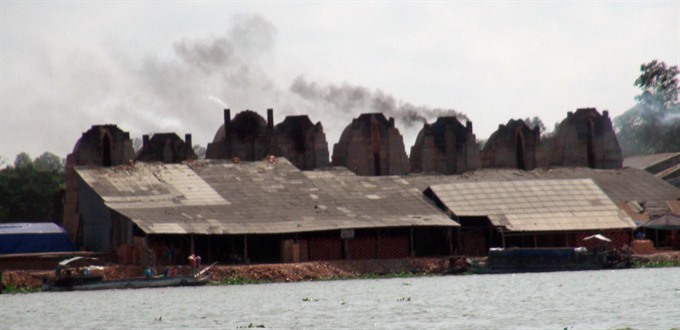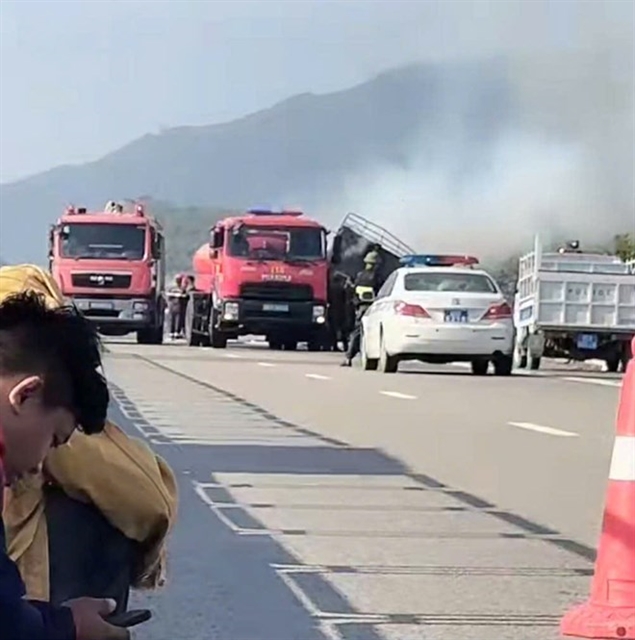 Environment
Environment

Fewer new pollution hotspots have been found in Việt Nam in the past few years, but vigilance is needed to control potential risks, the Ministry of Natural Resources and Environment’s Việt Nam Environment Administration has said.
 |
| Traditional brick kilns release untreated gas into air in Chợ Mới District, southern province of An Giang. — VNA/VNS Photo Công Mạo |
HÀ NỘI – Fewer new pollution hotspots have been found in Việt Nam in the past few years, but vigilance is needed to control potential risks, the Ministry of Natural Resources and Environment’s Việt Nam Environment Administration has said.
Figures from the administration show as many as 80 hotspots of environmental pollution were found and handled in 2016-18.
In 2016, 50 hotspots were found. The number decreased to 20 in 2017 and 15 in 2018.
Nguyễn Văn Tài, director of the administration said most hotspots arose due to untreated wastewater discharged by businesses, industrial zones and craft villages.
Tài cited some pollution crises caused by untreated wastewater.
In September last year, GYPS, a wastewater facility at a fertiliser-processing plant under State-run chemical corporation Vinachem in northern Lào Cai Province, broke down. The wastewater flew into the Thao River, polluting the river water. Local residents were warned not to use the river water for daily activities or irrigation.
The same month, wastewater spilled from a reservoir built for washing aluminum at Nhân Cơ Aluminum Plant in Đắk Nông Province, polluting residents’ crops in three villages of Đắk R’Lấp District.
A series of discharges of untreated waste water from private businesses and households occurred early last year, Vietnam News Agency reported. In March, Việt Nam Lee & Man Paper Manufacturing Limited was forced to stop operations after being accused of discharging untreated wastewater, affecting nearby households.
Residents living along Ngũ Huyện Khê River in northern Bắc Ninh Province have been complaining about horrible odour and black water from the river. Businesses and households have discharged untreated wastewater into the river for years.
Fish and clams have also been the victims of the untreated wastewater. Mass fish and clam deaths in the La Ngà River in southern Đồng Nai Province, Bồng Miêu River in central Quảng Nam Province, Xuân Thiều Beach in Đà Nẵng City and West Lake in Hà Nội were reported between March and July of 2018.
Tài said the storage, transport and burying of rubbish attracted public attention last year. Many dialogues were held between agencies and residents in Phượng Thành Dumping Site in Hà Tĩnh Province and Sóc Sơn Dumping Site in Hà Nội after residents protested dumping activities.
These hotspots have harmed public health and caused financial losses.
The problem, according to Tài, was a shortage of mechanisms and criteria to classify investment projects likely to harm the environment, as well as shortage of mechanisms to encourage investors to invest in green economic zones and eco-friendly products.
Loose management on licensing large-scale projects, especially evaluation of environmental impacts, also contributed to pollution.
Tài said the administration has set up an inspection team to supervise the trial operation of wastewater treatment systems of large-scale businesses such as Việt Nam Lee & Man Paper Manufacturing Limited, the VNT19 wood-pulp Plant in Dung Quất Economic Zone, Nghi Sơn Oil Refinery in central Thanh Hoá Province and Vĩnh Tân Thermal Power Plant in southern Bình Thuận Province and other businesses.
A special control scheme for projects and facilities likely to cause environmental pollution has been set up.
A hotline, which received reports from local residents about environmental incidents, would continue to be operated, he said.
Last year, more than 920 calls were made to report air, water and solid waste. A total 57 per cent of the calls were investigated by local authorities, he said.
According to the Ministry of Natural Resources and Environment, Việt Nam has 283 industrial zones and 615 industrial complex, discharging more than 550,000cu.m of wastewater per day.
Notably, only five per cent are equipped with wastewater treatment systems. – VNS




